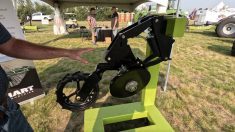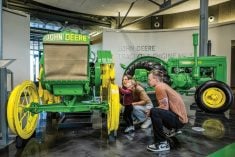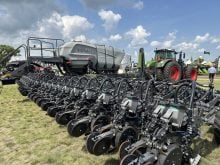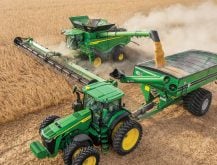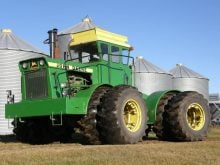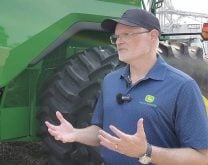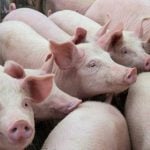In May, John Deere announced it was introducing an updated line of “precision” air hoe drills, the P600 series, which is designed to appeal specifically to small grains growers. The drills will be available in four models, the P660, P670, P680 and P690, in working widths from 60 to 90 feet. The new drills use the existing John Deere naming system. The “P” stands for precision hoe, the “6” is the series number, followed by the two-digit tool working width.
The new P600s use Deere’s dual-knife opener design, which offers available row spacings of 10 to 12 inches. The knives have a fairly standard configuration, placing fertilizer 1.5 inches horizontally and 0.75 inches vertically away from the seed, which the brand says should result in consistent emergence.
These new drills give customers a wide variety of other options to suit their operations, the company said in its announcement. And as we’ve heard from Deere in previous equipment introductions, it emphasizes its green implements are designed to work best with green tractors in front of them.
Read Also

Claas brings 1000 Series SP forage harvesters to Canada
In mid-August, Claas unveiled its new line of Jaguar forage harvesters at an event in Visalia, California, deep in the heart of that state’s dairy region.
“New P600 Precision Air Hoe Drills are part of our fully integrated small grains production system that can include a John Deere 9 series tractor equipped with a JDLink connection, John Deere Operations Center and John Deere Connected Support, along with your choice of air carts, for the ultimate in air seeding technology,” said Lina Pham, marketing manager for John Deere.
The company says the P600 drills “leverage existing integrated John Deere air seeding technologies.” Those include three-inch primaries on all working widths greater than 60 feet with the brand’s own distribution towers, improved tire options for optimal floatation, RelativeFlow blockage sensing, and full integration with John Deere tractors and air carts.
With Deere’s RelativeFlow blockage sensing feature, operators can see the flow rate of seed and fertilizer from the tractor cab. Sensors are located on all primary towers and secondary hoses, which monitor the relative product flow. The company says that provides a better picture of what’s going on with the flow of seed and fertilizer from the cart to the opener. The result is the layout could help operators identify problems before a full blockage occurs, which must be located and cleared, saving time as well as avoiding unseeded gaps in the field.




